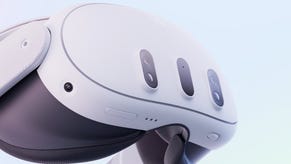Nintendo to drop Digital AV port from GameCube
The rarely-used Digital AV port on the back of the GameCube console is to be removed from future revisions of the hardware in a move designed to save production costs, Nintendo has confirmed today.
The rarely-used Digital AV port on the back of the GameCube console is to be removed from future revisions of the hardware in a move designed to save production costs, Nintendo has confirmed today.
The change will take effect on GameCubes shipped from April 1st in Japan, with the new version of the console then gradually making its way to other territories, presumably as stocks of the older version are depleted.
The removal of the port isn't big news for European gamers, since no game or video cable ever released here has supported any of its features; however, for American and Japanese gamers who want to use the progressive scan or HDTV functionality of the console, Nintendo plans to continue to make a version of the console with Digital AV support available.
In Japan, this console will be sold as a bundle with the Digital AV cable itself, while in North America, Nintendo of America has announced plans to allow new Cube owners to trade in DigitalAV-less consoles for systems with the port.
The news came as Nintendo announced that the price of the GameCube and GBA will not be rising in Japan despite the introduction of a new tax which would have added five per cent to the price tag of the console hardware. Instead, Nintendo will be absorbing the costs of the tax itself.
The only other notable physical difference between the current and new generations of GameCube hardware will be a cosmetic change to the top of the console, where the black logo disc will no longer be replaceable. Some game promotions in the past have allowed Cube owners to replace this disc with game-branded versions.
It's not unusual for console manufacturers to change the way that their systems are built late in their lifespan - indeed, most consoles undergo many revisions of the hardware as the platform holders work to squeeze every penny of profit (or reduced loss) from their manufacturing process.
Last year Sony removed the i-Link port from the PlayStation 2 with the introduction of a new model of the console, in a move widely seen as a cost-cutting measure since the port was very rarely used by games.








